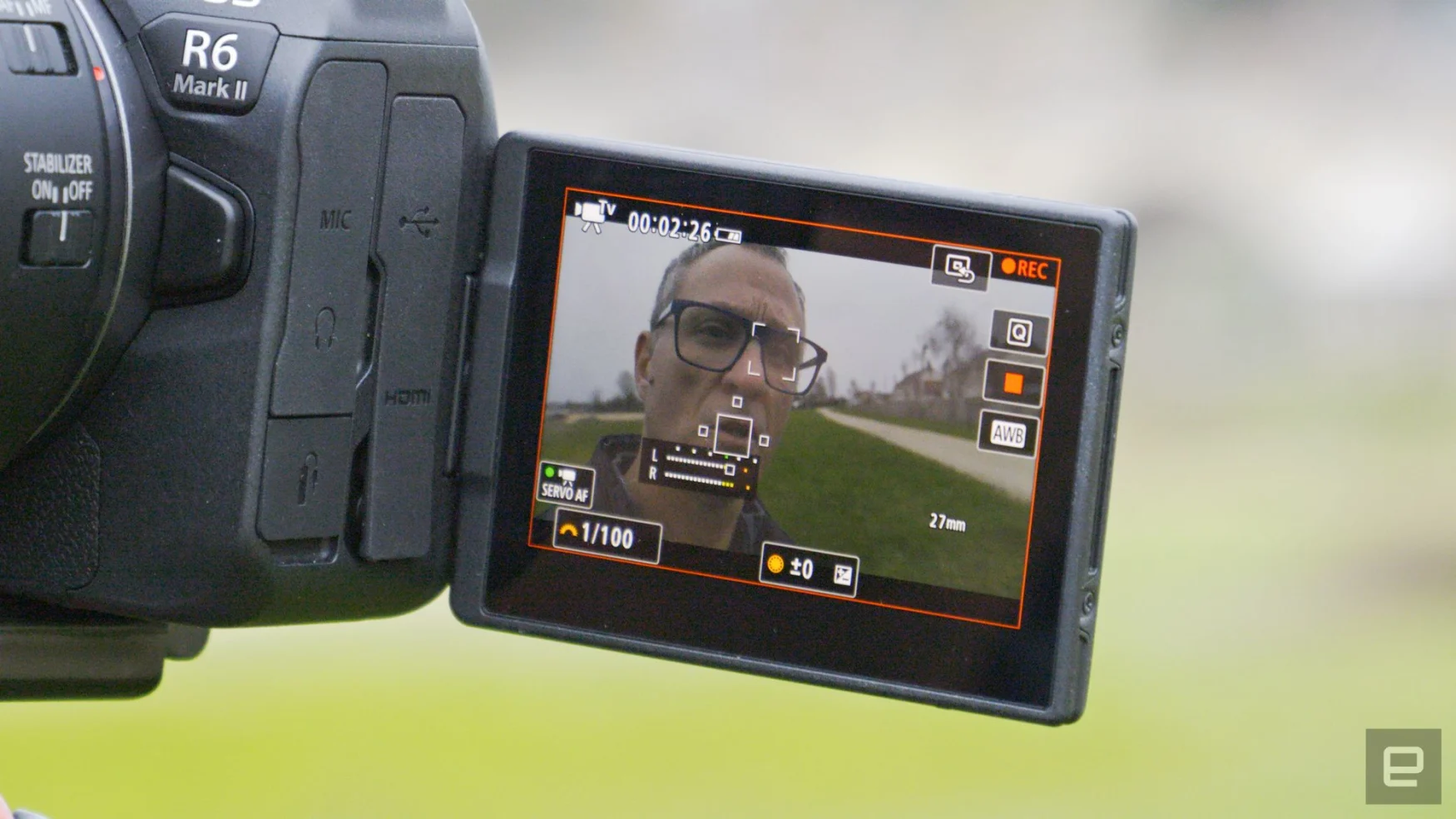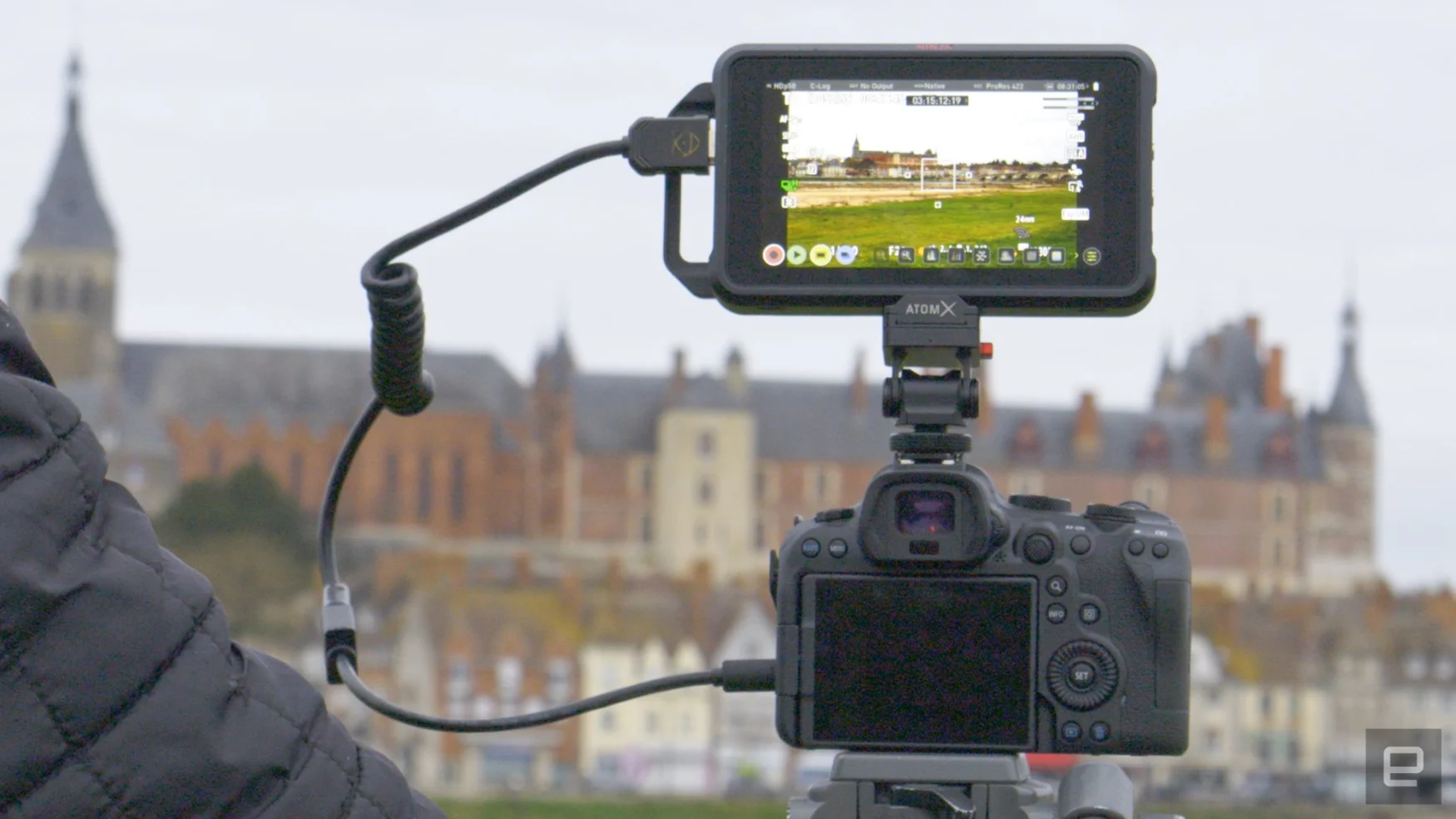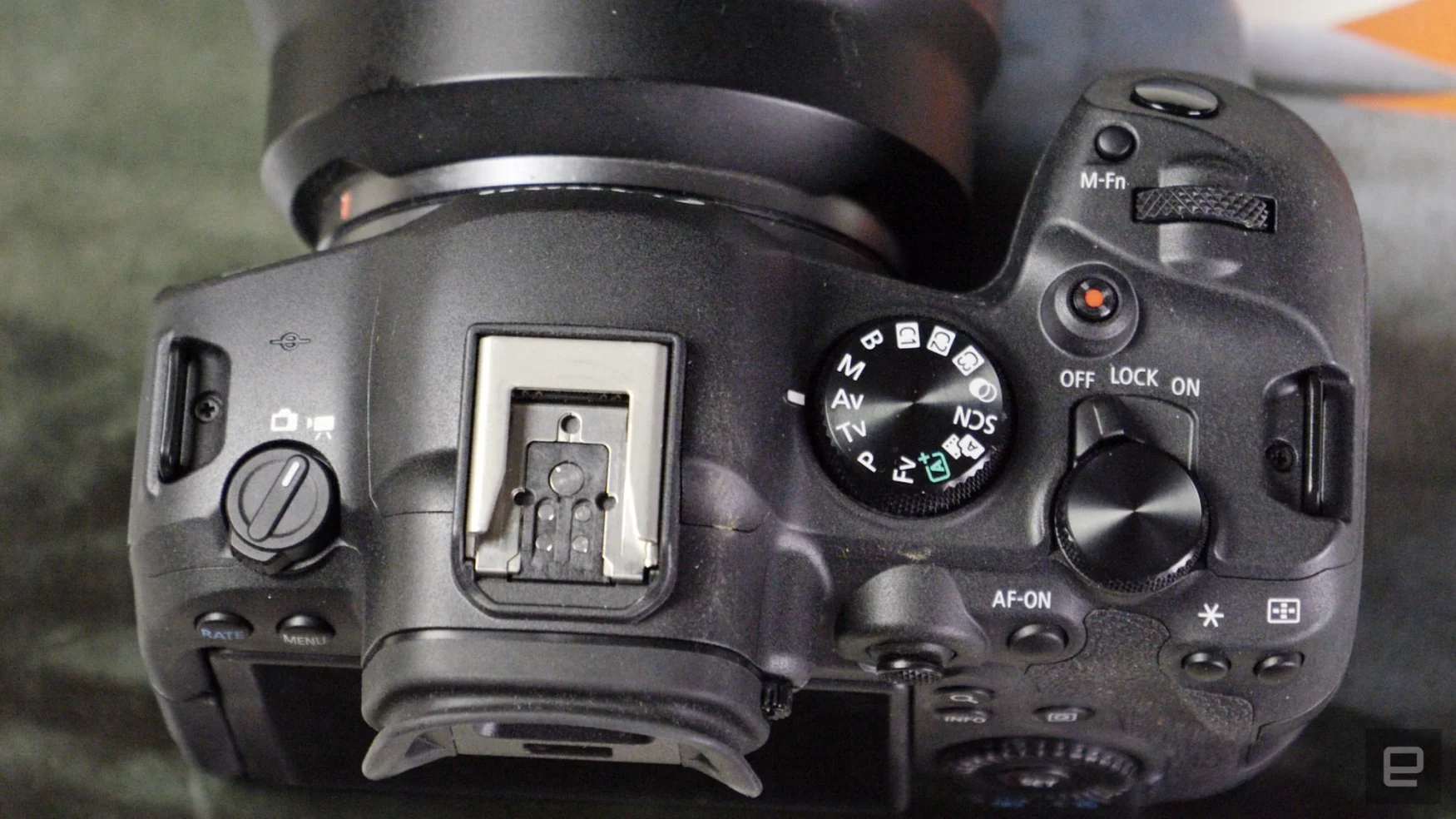Canon EOS R6 II review: An excellent hybrid camera with few flaws
Video
The EOS R6 II offers supersampled, full-frame 4K video all the way up to 60 fps. By contrast, the A7 IV and Panasonic’s S5 II both crop 60p video. Much like the A7 IV, 10-bit quality is available only in C-Log3 mode, with 8-bit in the regular video modes. That’s too bad, as regular 10-bit video provides extra headroom in shadows and highlights, without the hassle of applying LUTs or doing other color correction. All resolutions are available in 1.6X crop mode, with just a slight loss in sharpness.
You can do super slow mo in 1080p at up to 180fps, though the footage is barely usable. It’s more acceptable at 120fps, which still slows the action way down. And finally, you can shoot up to 6K in 12-bit ProRes RAW to an external Atomos Ninja V+ recorder. That delivers the best quality and easiest-to-edit video, if you don’t mind the hassle.
With the original R6, heating issues were a showstopper for many. You could shoot no more than 40 minutes of video at 4K 30fps, or 30 minutes at 60p. On top of that, you had to wait at least 10 minutes for it to cool down, and then you could only shoot for another 10 minutes or so.
Fortunately, those problems are largely gone. I shot supersampled 4K 30p video for nearly two hours until the battery died with no heating issues. In 60p supersampled mode, Canon says you can shoot for up to 50 minutes and get back to shooting again more quickly and for a longer time.

Those numbers are actually conservative, as I was able to shoot 4K 60p for over an hour (albeit, in 50 degree F temperatures). If you start and stop 4K 60p capture, there are no problems. If you really need continuous 4K 60p video, get another camera, but otherwise overheating issues are largely gone.
Quality is excellent, with sharper video than the competition at 4K 60p. Dynamic range in CLog3 mode isn’t quite as good as Sony’s A7 IV or the Panasonic S5 II, though. Much of that is lost in shadows, so it’s better to slightly over than underexpose when shooting C-Log3. It’s nothing you’d notice for regular non-log video, though.
Low-light video is good at ISOs up to 6400 and you can get away with 12800 if you’re careful with exposure. If not, boosting shadows can create some serious noise. Still, it’s one of the better full-frame cameras in low light, making it useful for things like concerts or plays.
One unfortunate omission compared to rivals is the lack of easy-to-edit intra-frame (all-intra or ProRes) codecs. That makes it pretty much mandatory to convert to ProRes or another format afterward, as even fast editing systems don’t like LongGOP. Sony’s A7 IV, meanwhile, supports all-intra capture at up to 600 megabits per second, which is one reason it has a CFexpress Type A card slot.
Video autofocus is a strong point for Canon. With single-point autofocus for run and gun shooting, interviews and the like, I rarely had out-of-focus shots. Human face and eye-tracing is incredibly reliable for videos. It stays locked on the subject and keeps them in focus as they move, though again, Sony’s A7 IV is slightly quicker.

As with photos, it also offers reliable animal and vehicle tracking, with the same “auto” mode that lets the camera’s AI choose the subject type. Overall, the R6 II is another reliable Canon camera in terms of video autofocus – something I think is really important for most video shooters, especially vloggers or documentary filmmakers..
Canon beats all rivals in rolling shutter. It’s noticeably better than on the Sony A7 IV, even in fully-downsampled mode. In 1.6 crop mode, it’s barely detectable, even if you whip the camera around. Like bad autofocus, excessive rolling shutter can ruin shots, so for me this is another key feature.
In-body stabilization is fine for stationary handheld shots or small movements. Anything more can be jerky, even in enhanced digital IS mode, however. The R6 II is about the same as the A7 IV in this regard, but Panasonic’s new S5II has massively improved stabilization designed for video and looks like it will beat both cameras.
Finally, Canon has introduced a digital focus breathing feature, much like Sony has on the A7 IV. This allows you to “rack” focus from one subject to another without either changing in size, by essentially using digital zoom to counteract the optical zoom. It works well, but only with a handful of lenses for now.
Wrap-up

Canon’s $2,500 EOS R6 II is a formidable hybrid mirrorless camera, with fast shooting speeds, accurate autofocus and strong video capabilities. The overheating issues have largely been fixed, unless you really need to shoot continuous 4K 60p full-frame video. The main downside is a lack of dynamic range compared to rivals.
Sony’s $2,500 A7 IV has more resolution but slower shooting speeds, particularly in electronic mode. Rolling shutter is a more serious issue on that camera as well. On the plus side, it offers slightly better image quality and autofocus that’s a touch faster.
Panasonic’s $2,000 S5 II has slightly better video specs, but it remains to be seen if autofocus can keep up. The S5 IIx, coming in May, looks like a better mirrorless camera for video and it’s less expensive at $2,200. And finally, if you’re willing to drop down to an APS-C sensor, the $2,500 X-H2S has a stacked sensor and better video chops, but slightly inferior autofocus. If you shoot both photos and video equally, I’d choose the EOS R6 II over all those models.
